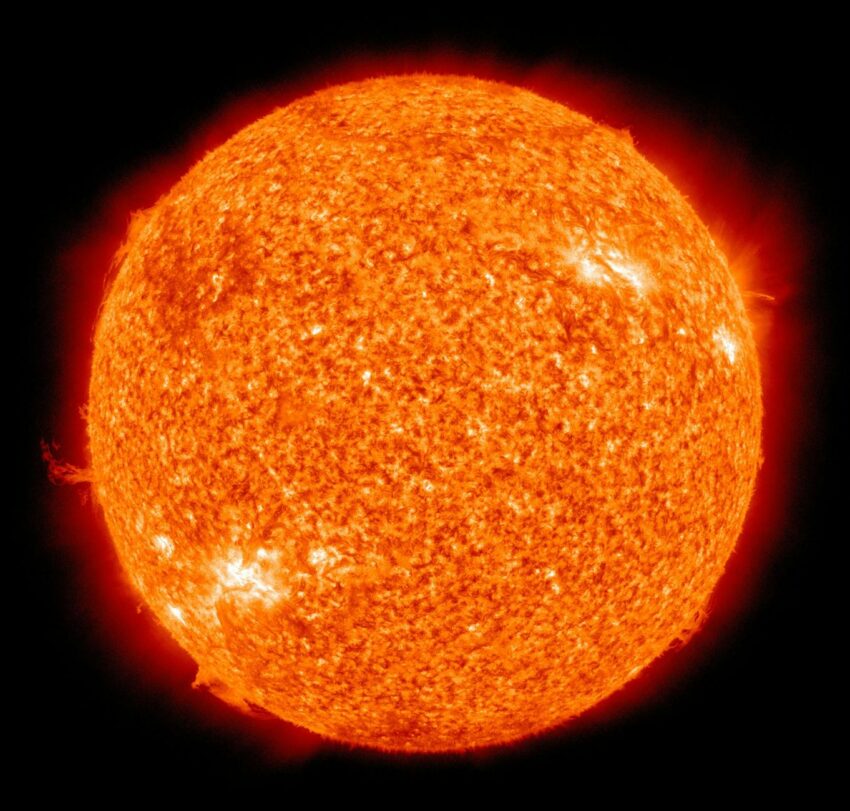There are days when the sky feels almost too quiet — a silence that hums in the background, like the Earth itself is holding its breath. Then a headline breaks through the noise: “Three sunspots appear on the solar surface.” For most people, that sounds like something out of a science fiction novel. But in reality, those dark blemishes — temporary scars across the golden skin of our star — are entirely real. And lately, they’ve been multiplying.
But should we be afraid?
That question lingers, unspoken, beneath the glow of every sunrise.
The Pulse Beneath the Light
To understand sunspots, you have to think of the Sun not as a static ball of fire, but as a living organism — breathing, flexing, and occasionally, flaring with unpredictable intensity. Beneath its blinding surface churns a sea of molten plasma twisted by invisible magnetic fields. When those fields snarl and tangle, energy locks up like tension in a clenched fist. Eventually, something gives.
That release — that ripple in the cosmic calm — is what we see as a sunspot. It’s cooler than its surroundings, darker by comparison, but seething with magnetic potential. And right now, three of them have opened their eyes toward Earth.
Scientists call this part of the solar cycle, a rhythmic dance that unfolds roughly every eleven years. Right now, we’re in Solar Cycle 25, and the tempo is quickening. Sunspots appear, fade, and reappear as the Sun gears up for its peak — a solar maximum — expected within the next couple of years.
For astronomers, it’s thrilling. For the rest of us, it’s a little unsettling.
What Happens When the Sun Gets Moody
Here’s where things get fascinating — and slightly unnerving.
When a sunspot becomes especially charged, it can erupt, sending solar flares and coronal mass ejections (CMEs) shooting across space. Think of it as the Sun sneezing — except that sneeze can hurl billions of tons of plasma into the solar wind.
Most of the time, those flares miss us. But every once in a while, one heads straight for Earth, and when that happens, our planet’s magnetic shield trembles. Satellites shudder, GPS signals waver, and astronauts aboard the ISS watch as radiation counts spike.
The most powerful flare ever recorded — the Carrington Event of 1859 — fried telegraph wires and set papers ablaze on desks. If a similar event occurred today, our hyper-connected world might experience widespread power outages, communication disruptions, and satellite failures.
So yes, when we see three sunspots forming at once, it’s not panic we feel — it’s awareness. We’re witnessing the slow inhale before a possible solar exhale.
A Universe of Balance
But let’s step back. Because the truth is — this is normal.
Sunspots are not harbingers of doom. They are symptoms of a healthy, active star. The Sun has been flaring, pulsing, and resetting itself long before humans ever looked up and wondered what it meant. Three sunspots on its surface are a whisper compared to the roars of solar activity that have shaped eons of cosmic weather.
NASA’s solar physicists monitor these spots constantly through observatories like the Solar Dynamics Observatory (SDO) and the Parker Solar Probe. They map magnetic structures, predict flare probabilities, and issue alerts when something noteworthy is brewing.
Right now, the consensus is clear: the Sun is waking up, not lashing out.
Solar Cycle 25 is vibrant but within expected ranges — energetic, yes, but not catastrophic.
The Dance Between Chaos and Beauty
If you’ve ever seen the aurora — those ghostly green ribbons unfurling across the night sky — you’ve already witnessed the beauty of solar restlessness. Those ethereal curtains of light are Earth’s magnetic field absorbing and transforming solar energy into color and motion.
Every sunspot that flares too wildly may bring disruption, but it also paints the sky. It’s a reminder that our world is still deeply connected to forces far beyond its own gravity.
And maybe that’s why people feel a quiet unease when they hear about sunspots. It’s not fear of danger — it’s awe. The realization that something 93 million miles away can ripple through our technology, our atmosphere, even our sense of control.
Three dark eyes gazing at us from the Sun’s surface — not malevolent, just magnificent.
Why Scientists Are Watching Closely
Still, vigilance matters.
At agencies like the NOAA Space Weather Prediction Center, solar forecasters are on constant alert. They categorize solar activity using scales:
- R-scale for radio blackouts,
- S-scale for solar radiation storms,
- G-scale for geomagnetic disturbances that can affect power grids.
Most events triggered by current sunspots have been minor — an occasional G1 or G2 geomagnetic storm, nothing civilization-shattering. But monitoring remains essential, because a single X-class flare (the highest level) could unleash temporary havoc in our modern systems.
Yet, for the average person on Earth, even during solar maximum, life continues uninterrupted. Your phone will still charge. Your lights will still glow. You might just notice an unusual northern shimmer if you live beneath the dancing lights of the aurora.
The Sun Isn’t Angry — It’s Alive
So, should you worry about the three sunspots appearing right now?
No.
You should notice them. You should respect them. You should remember that our Sun — constant, glowing, life-giving — is not a static sphere but a wild, living engine of creation.
Those dark circles aren’t warnings. They’re windows — showing us that even the most stable light in our lives carries its own rhythm of chaos and calm. And that balance, fragile and breathtaking, is what keeps our world alive.

